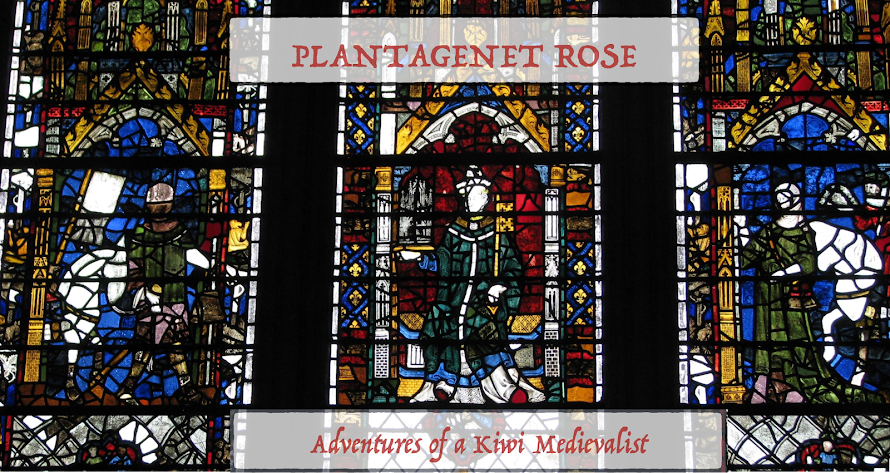Passion scenes are one of the most common topics for medieval stained glass windows. This (click on it to make it bigger!) is a Passion and Resurrection sequence, now forming the West Window in All Saints Pavement, York. The glass, which is from the late 14th century, was originally just across the road in St Saviour's Church, where it formed part of the great East Window behind the altar.
The glass work is incredibly detailed, especially the small shield on the far right of the window (for a close-up see below). This depicts the Arma Christi - the instruments of the Passion. In the Middle Ages it was common to meditate on the gory and gruesome details of the Passion so that one might be provoked to sorrow for sin and gratitude for Christ's sacrifice. This is known as affective piety and is a hallmark of medieval religious art, literature and drama.
In the centre of the Arma Christi shield is, naturally enough, the cross. The crown of thorns hangs over the crossbar and the three nails used to pin Christ to the cross are in position at the two ends of the crossbar and at the bottom of the downpiece.
Crossed in front of the downpiece are a pole with the sponge used to give Christ gall and vinegar, and the spear used by the Roman soldier Longinus to pierce the side of Christ.
To the left of the cross is Christ's seamless garment; underneath and to either side of the support are the three dice used by the soliders to cast lots. Beneath the tip of the lance is a chalice with a host suspended above it.
On the right of the cross is the pillar used for the scourging; wound round it is the cord which bound Christ to it; the scourges are higher up, one on each side of the downpiece of the cross. Also in this right-hand section are a Pinner's (the Pinners made nails and other ironwork) hammer and a pair of Blacksmith's pincers, which would have been used to shape and forge the nails (or pins).
The strange spoon-like object over the left arm of the cross bar I cannot identify. All I can think of is that it is an izmel, or knife of the circumcision, although it doesn't look very knife-like... if anyone has a better idea, please let me know!!
The pattern of one horizontal line with three downward strokes attached which covers the background of the shield represents Christ's wounds and the blood which flowed from them.



No comments:
Post a Comment